Mercedes EQE vs Toyota Mirai – Differences & prices compared
Compare performance, boot space, consumption and price in one view.
Find out now: which car is the better choice for you – Mercedes EQE or Toyota Mirai?
The Mercedes EQE (Sedan) comes with a Electric engine and Automatic transmission. In comparison, the Toyota Mirai (Sedan) features a Hydrogen engine with Automatic transmission.
When it comes to boot capacity, the Mercedes EQE offers 430 L, while the Toyota Mirai provides 300 L – depending on how much space you need. If you’re looking for more power, decide whether the 625 HP of the Mercedes EQE or the 182 HP of the Toyota Mirai suits your needs better.
In terms of consumption, the values are 15.80 kWh per 100 km for the Mercedes EQE, and for the Toyota Mirai.
Price-wise, the Mercedes EQE starts at 57600 £, while the Toyota Mirai is available from 58700 £. Compare all the details and find out which model fits your lifestyle best!
Mercedes EQE
The Mercedes-Benz EQE epitomises the brand's commitment to luxury and electric mobility, offering a seamless blend of cutting-edge technology and elegant design. Inside, occupants are treated to a sophisticated cabin that combines high-quality materials with state-of-the-art infotainment features, ensuring a refined driving experience. On the road, the EQE impresses with its smooth, quiet ride and impressive agility, making it a standout choice for those seeking both comfort and sustainability.
details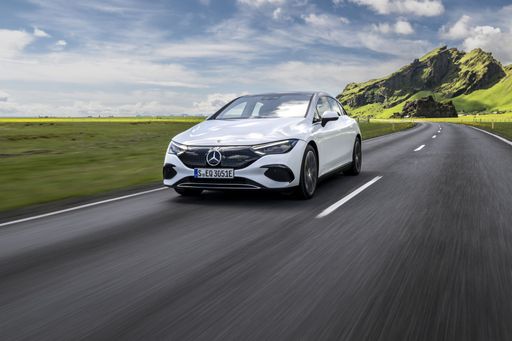 @ group-media.mercedes-benz.com
@ group-media.mercedes-benz.com
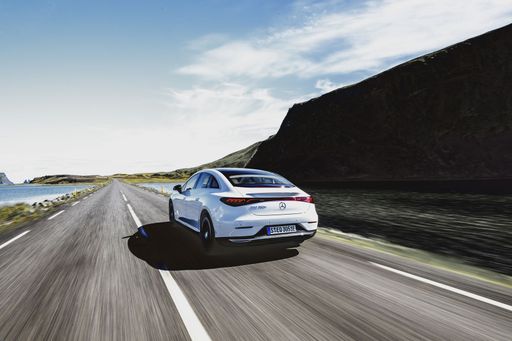 @ group-media.mercedes-benz.com
@ group-media.mercedes-benz.com
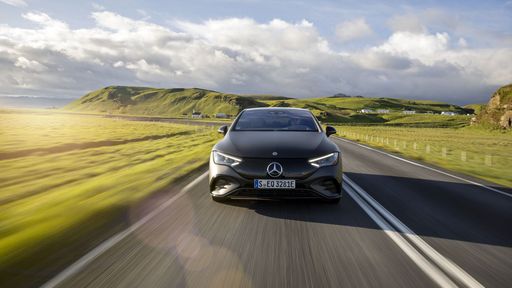 @ group-media.mercedes-benz.com
@ group-media.mercedes-benz.com
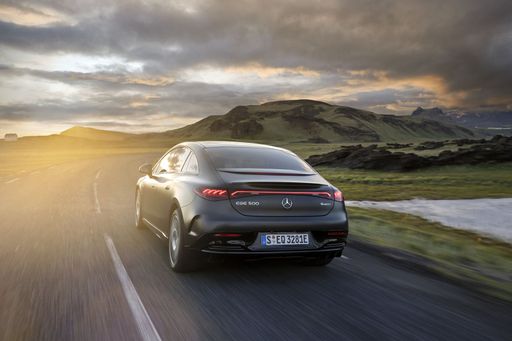 @ group-media.mercedes-benz.com
@ group-media.mercedes-benz.com
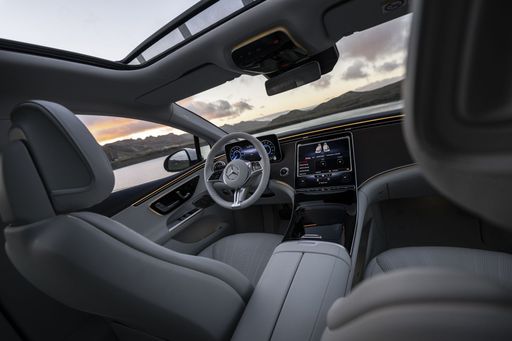 @ group-media.mercedes-benz.com
@ group-media.mercedes-benz.com
Toyota Mirai
The Toyota Mirai represents a groundbreaking step in hydrogen fuel cell technology, offering an eco-friendly alternative to traditional petrol engines. Its sleek design and futuristic aesthetic make it a standout on the road, while the interior combines comfort with cutting-edge features. With its impressive range and quick refuelling capabilities, the Mirai is paving the way for the future of sustainable motoring.
details @ Toyota
@ Toyota

|

|
|
|
|
Costs and Consumption |
|
|---|---|
|
Price
57600 - 94900 £
|
Price
58700 - 66700 £
|
|
Consumption L/100km
-
|
Consumption L/100km
-
|
|
Consumption kWh/100km
15.8 - 20.7 kWh
|
Consumption kWh/100km
-
|
|
Electric Range
502 - 691 km
|
Electric Range
650 km
|
|
Battery Capacity
90.5 - 96 kWh
|
Battery Capacity
-
|
|
co2
0 g/km
|
co2
-
|
|
Fuel tank capacity
-
|
Fuel tank capacity
5 L
|
Dimensions and Body |
|
|---|---|
|
Body Type
Sedan
|
Body Type
Sedan
|
|
Seats
5
|
Seats
5
|
|
Doors
4
|
Doors
4
|
|
Curb weight
2375 - 2540 kg
|
Curb weight
1900 - 1930 kg
|
|
Trunk capacity
430 L
|
Trunk capacity
300 L
|
|
Length
4946 - 4964 mm
|
Length
4975 mm
|
|
Width
1961 mm
|
Width
1885 mm
|
|
Height
1492 - 1510 mm
|
Height
1470 mm
|
|
Payload
545 - 600 kg
|
Payload
485 - 515 kg
|
Engine and Performance |
|
|---|---|
|
Engine Type
Electric
|
Engine Type
Hydrogen
|
|
Transmission
Automatic
|
Transmission
Automatic
|
|
Transmission Detail
-
|
Transmission Detail
-
|
|
Drive Type
All-Wheel Drive, Rear-Wheel Drive
|
Drive Type
Rear-Wheel Drive
|
|
Power HP
265 - 625 HP
|
Power HP
182 HP
|
|
Acceleration 0-100km/h
3.5 - 6.9 s
|
Acceleration 0-100km/h
9.20 s
|
|
Max Speed
210 - 220 km/h
|
Max Speed
175 km/h
|
|
Torque
550 - 950 Nm
|
Torque
300 Nm
|
|
Number of Cylinders
-
|
Number of Cylinders
-
|
|
Power kW
195 - 460 kW
|
Power kW
134 kW
|
|
Engine capacity
-
|
Engine capacity
-
|
General |
|
|---|---|
|
Model Year
2024 - 2025
|
Model Year
2021 - 2022
|
|
CO2 Efficiency Class
A
|
CO2 Efficiency Class
-
|
|
Brand
Mercedes-Benz
|
Brand
Toyota
|
Mercedes EQE
The Future of Driving: A Look at the Mercedes-Benz EQE
In an era where sustainability meets luxury, the Mercedes-Benz EQE stands as a beacon of automotive innovation. Incorporating cutting-edge technology and an emphasis on electric performance, this sleek saloon is pivotal to the evolution of Mercedes' electric line-up.
Revolutionary Electric Performance
The Mercedes-Benz EQE offers powertrains ranging from 245 to an impressive 625 PS, catering to varying preferences for performance. Its all-electric engine shows a commitment to sustainability while delivering powerful torque between 550 and 950 Nm. These specifications make it a formidable player in the electric vehicle market.
Efficiency Meets Elegance
With an electric range of 502 to 690 km on a single charge and a power consumption between 15.9 and 20.8 kWh/100 km, the EQE is designed for both long drives and city commutes. The sleek design of the sedan enhances aerodynamics, reducing drag and extending range efficiency, while maintaining the elegance expected from a Mercedes-Benz vehicle.
Innovative Features and Technology
The EQE is equipped with a state-of-the-art automatic transmission and a specific reduction gearbox, ensuring seamless power delivery. The interior is packed with technological innovations like advanced driver assistance systems, which elevate the driving experience with industry-leading safety features.
Comfort and Capacity
Inside the EQE, up to five passengers can travel in plush comfort, surrounded by luxurious materials and top-notch infotainment systems. The car offers a 430-litre boot space, accommodating all the needs for a family journey or an executive business trip.
Sustainable Luxury
As an electric vehicle producing zero CO2 emissions, the EQE proudly holds an A-class CO2 efficiency rating. Its price range, from €67,187 to €110,706, reflects the investment in innovative technology and sustainable practices, offering a premium eco-friendly alternative in the automotive world.
Conclusion
The Mercedes-Benz EQE marks a significant stride in the automotive industry, blending performance, luxury, and sustainability. With its impressive range, innovative features, and elegant design, the EQE is a testament to Mercedes-Benz's dedication to electric mobility. It sets new standards for what consumers can expect from an electric vehicle, continuously pushing the boundaries of what is possible in automotive luxury.
Toyota Mirai
The Future of Driving: Introducing the Toyota Mirai
The Toyota Mirai represents a significant leap forward in automotive innovation, being one of the leading vehicles in the hydrogen fuel cell market. As we continue to search for sustainable transportation solutions, the Mirai stands out with its pioneering technology and exceptional driving features.
Revolutionary Hydrogen Fuel Cell Technology
At the heart of the Toyota Mirai is its groundbreaking hydrogen fuel cell system. Unlike conventional internal combustion engines, the Mirai uses a fuel cell stack to generate electricity through the chemical reaction between hydrogen and oxygen. This process not only powers the car with zero emissions—producing only water vapour as a byproduct—but also delivers a smooth and silent drive.
Technical Specifications and Performance
The Toyota Mirai is designed with performance in mind. It boasts a power output of 182 PS (134 kW) and delivers a robust 300 Nm of torque, allowing it to accelerate from 0 to 100 km/h in just 9.2 seconds. While its top speed is a respectable 175 km/h, it's the Mirai's impressive range that really stands out. The vehicle can travel up to 650 km on a single hydrogen fill-up, making it a practical choice for long-distance travel.
Sophisticated Design and Comfort
Designed as a saloon, the Toyota Mirai combines aesthetic appeal with comfort. Its dimensions—4975 mm in length, 1885 mm in width, and 1470 mm in height—provide a spacious interior for five passengers. The design is sleek and modern, reflecting its advanced engineering. The boot offers 300 litres of storage, suitable for everyday needs.
Advanced Features and Safety
The Toyota Mirai doesn't just excel in propulsion technology; it also includes a range of advanced features to enhance driver comfort and safety. Available in three trims—Advanced, Executive, and Luxury—the Mirai includes state-of-the-art safety systems and infotainment options to ensure a connected and secure driving experience.
Cost and Efficiency
While the price of the Toyota Mirai ranges from €65,990 to €76,290, its monthly running costs—estimated between €1,496 and €1,672—and per kilometre costs of 59.9 to 66.9 cents, reflect the efficient nature of hydrogen-powered vehicles. Considering its innovative technology, the Toyota Mirai offers excellent value for those looking to invest in the future of eco-friendly transport.
The Toyota Mirai: Driving Towards a Sustainable Future
Overall, the Toyota Mirai is more than just a car; it's a vision for the future of sustainable transportation. With its cutting-edge hydrogen fuel cell technology, impressive range, and commitment to zero-emissions driving, the Mirai sets a new standard in environmentally conscious car design. Whether you're an eco-enthusiast or just someone seeking a reliable and technological advanced vehicle, the Toyota Mirai is worth considering.
The prices and data displayed are estimates based on German list prices and may vary by country. This information is not legally binding.
